Monday Mar. 5, 2007
The Experiment #2 reports have been graded and were returned in
class. Revised reports are due the Wed., Mar. 21. Please
return your original report with a revised report.
The optional assignment was also returned. You'll find answers here.
We'll
finish up the material on the seasons today.
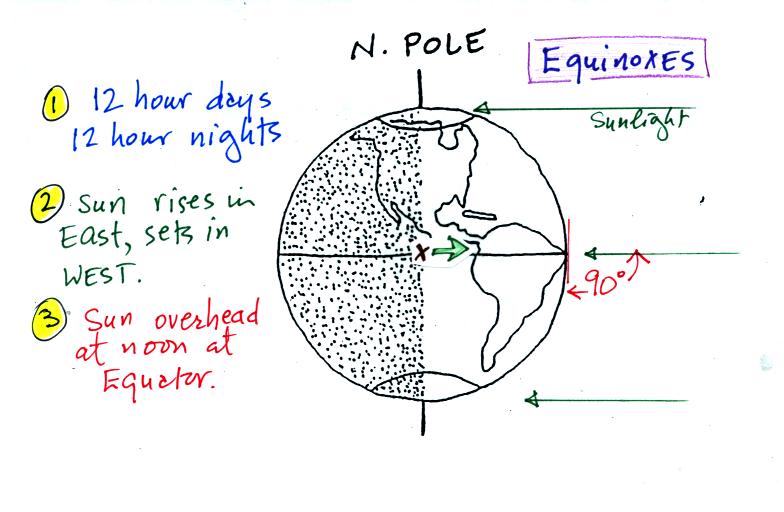
Here's a quick summary of some of the main things that happen on the
equinoxes. With a little thought you can understand why the days
are 12 hours long, the sun is overhead at noon at the equator, and why
you would need to look due east to see the sun rise. Once you
understand these three things you can better appreciate the changes
that occur on the summer and winter solstices.
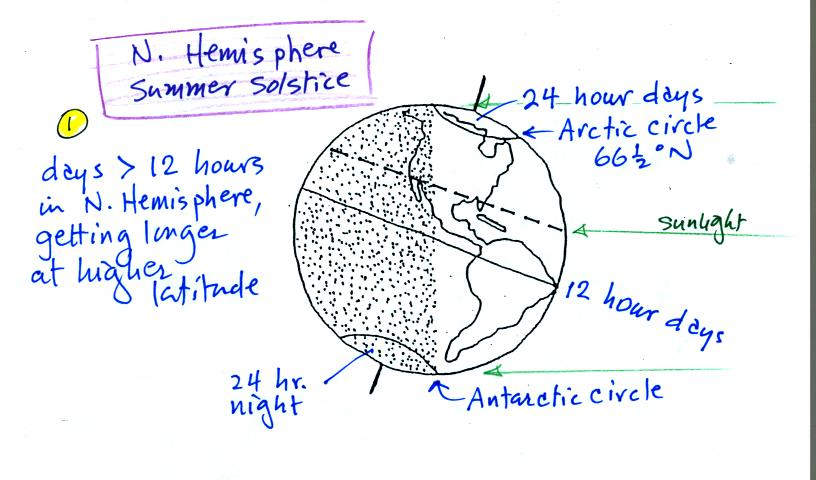
Days are more than 12 hours long in the N. Hemisphere on the summer
solstice.
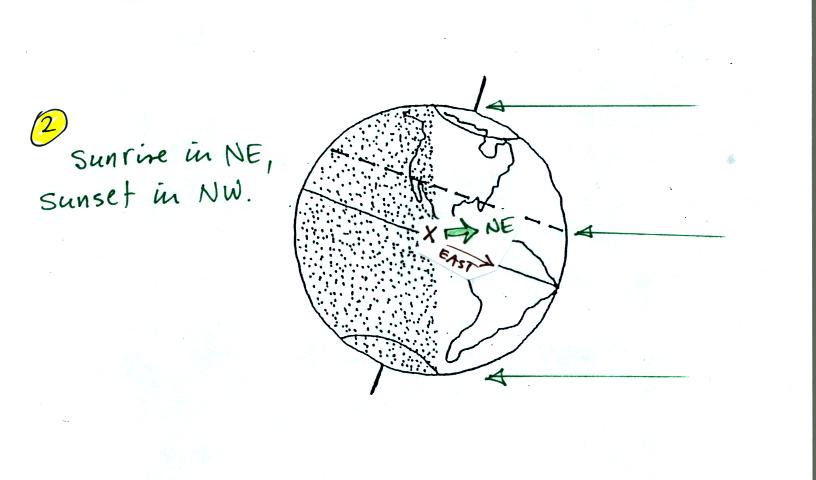
If you look east from position X in the picture you won't see the sun
because you won't be looking back along the ray of light coming from
the sun. You must turn to the north. The sun rises in the
NE on the summer solstice.
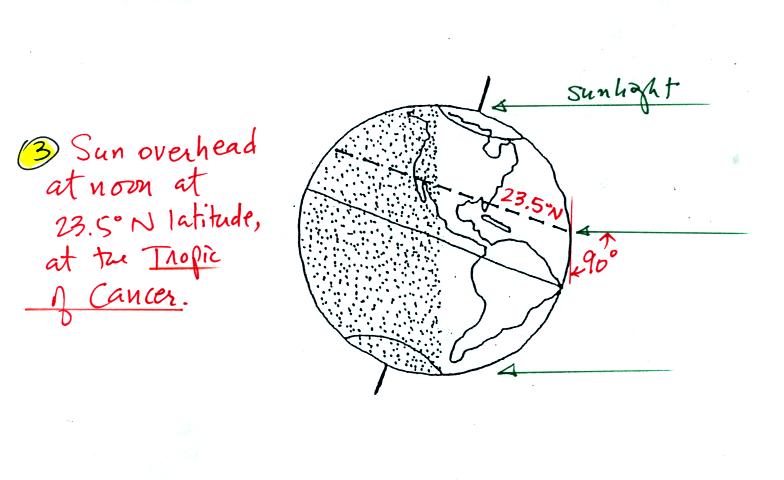
Rays of sunlight strike the globe perpendicularly at 23.5 N latitude,
the Tropic of Cancer, at noon on the summer solstice.

We learned one more important thing about the summer solstice.
You might expect to find the greatest amount of sunlight energy
arriving at the ground at the equator or maybe at 23.5 N
latitude. But, actually, the maximum amount of sunlight energy is
delivered to locations near 30 degrees latitude. This is where
the hottest locations on earth are found.
And now
the winter solstice. We'll attack it in the same way.
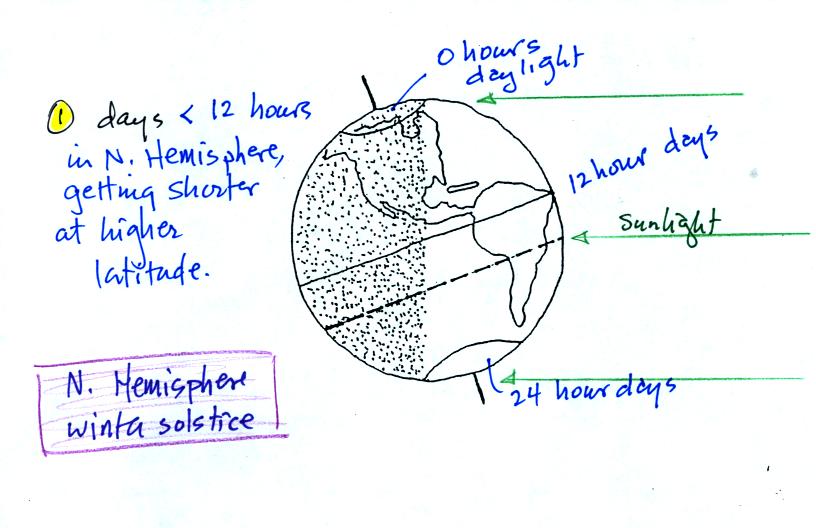
This is just the opposite of the summer solstice. Days are less
than 12 hours long in the N. Hemisphere. The days get shorter as
you move from the equator (where the days are always 12 hours long)
toward the N. Pole.
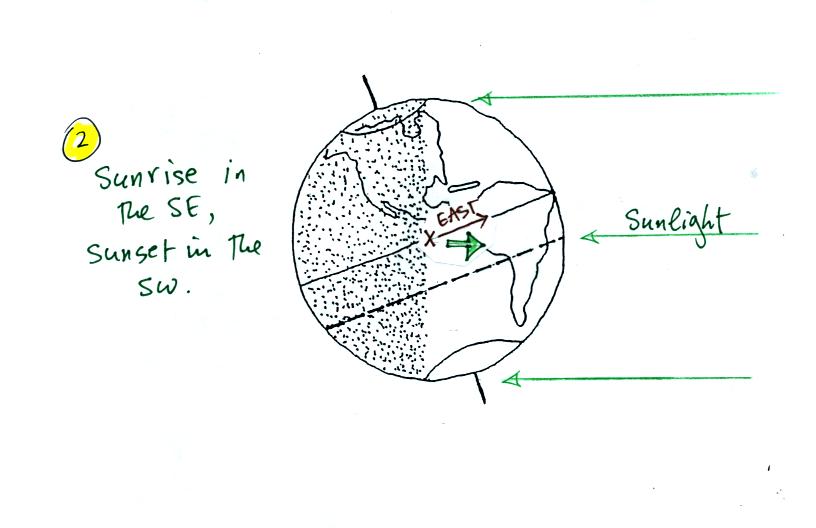
On the winter solstice you need to turn to the southeast to see the sun
rise. The sun sets in the southwest.
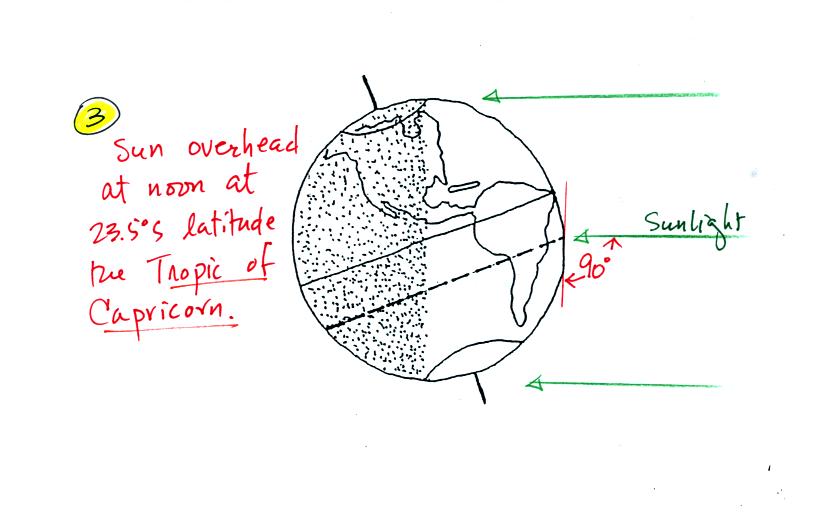
The sun will pass overhead at noon at 23.5 S latitude, at the Tropic of
Capricorn.

In Tucson the sun will rise in the SE at about 7:30 am and set in the
SW at around 5:30 pm. The sun only gets to 34.5 above the
southern horizon at noon. This is low enough to really reduce the
intensity of the incoming sunlight and what does make it to the ground
is spread out over a pretty large area. And the situation is
worse in Minneapolis. Days are only 8 hours long (sunrise an hour
later and sunset an hour earlier than in Tucson) and the sun barely
gets above 20 degrees.
The two factors, length of day and angle of the sun in the sky, work
together to reduce the sunlight energy absorbed by the ground as you
move to higher and higher latitude.
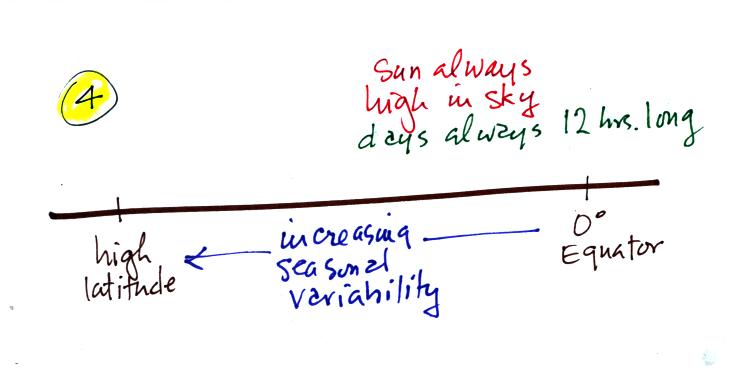
The sun is always pretty high in the sky (at noon) at the equator; not
always overhead but always pretty high. That coupled with the
fact that days are 12 hours long throughout the year means that there
is very little seasonal change at the equator. Seasonal
variability increases as you move toward higher latitude.
The next
figure (from p. 81 in the photocopied class notes) shows how little
seasonal change there is in some parts of the world.
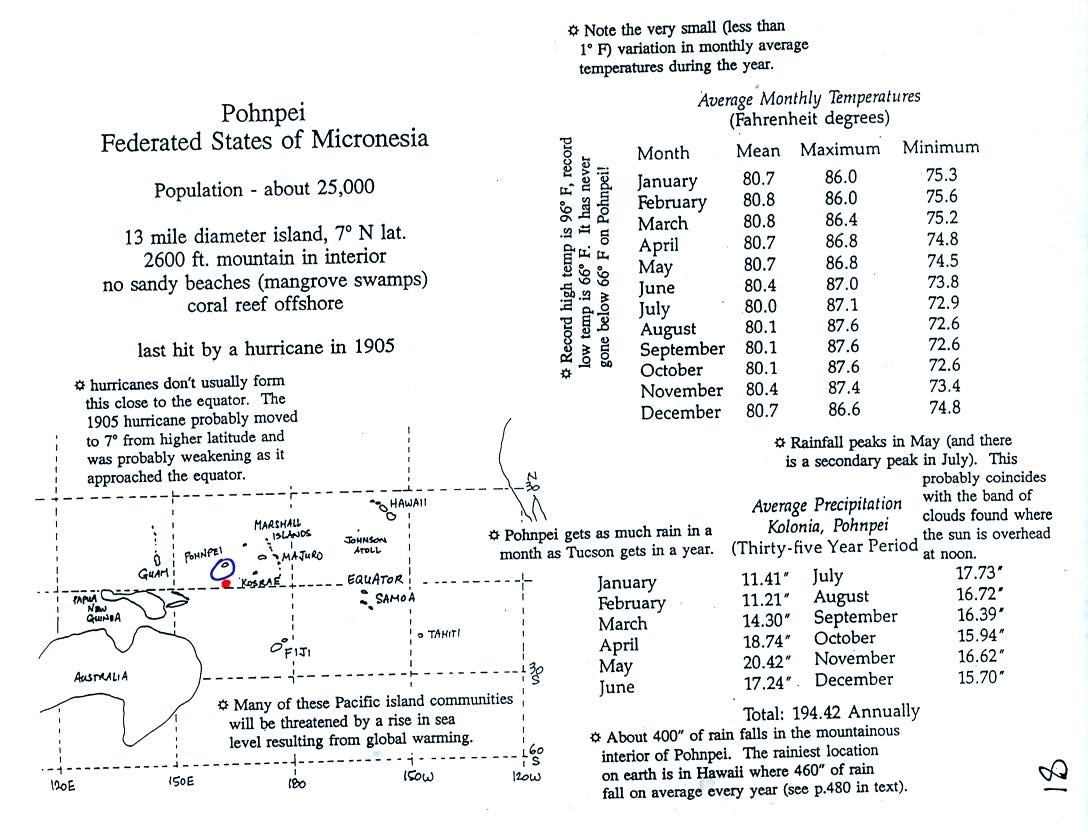
Pohnpei Island (Federated States of Micronesia) is located in the
middle of the Pacific Ocean at 7 N. latitude. Low latitude and
being surrounded by water are two of the factors that would
act to reduce the annual range of temperature. You can see in the
table in the upper right part of the page that average monthly
temperatures in Pohnpei range from 80.8 F in February and March to 80.0
F in July. The annual range is less than 1 F. By
comparison, the annual
range in Tucson is about 34 F (52 F in December and January to 86 F
in July)
The
material on humidity covered at the end of the period won't be on this
week's quiz. The notes are going to be moved to another
location. Look for those notes in the Lecture Notes Table of Contents.










